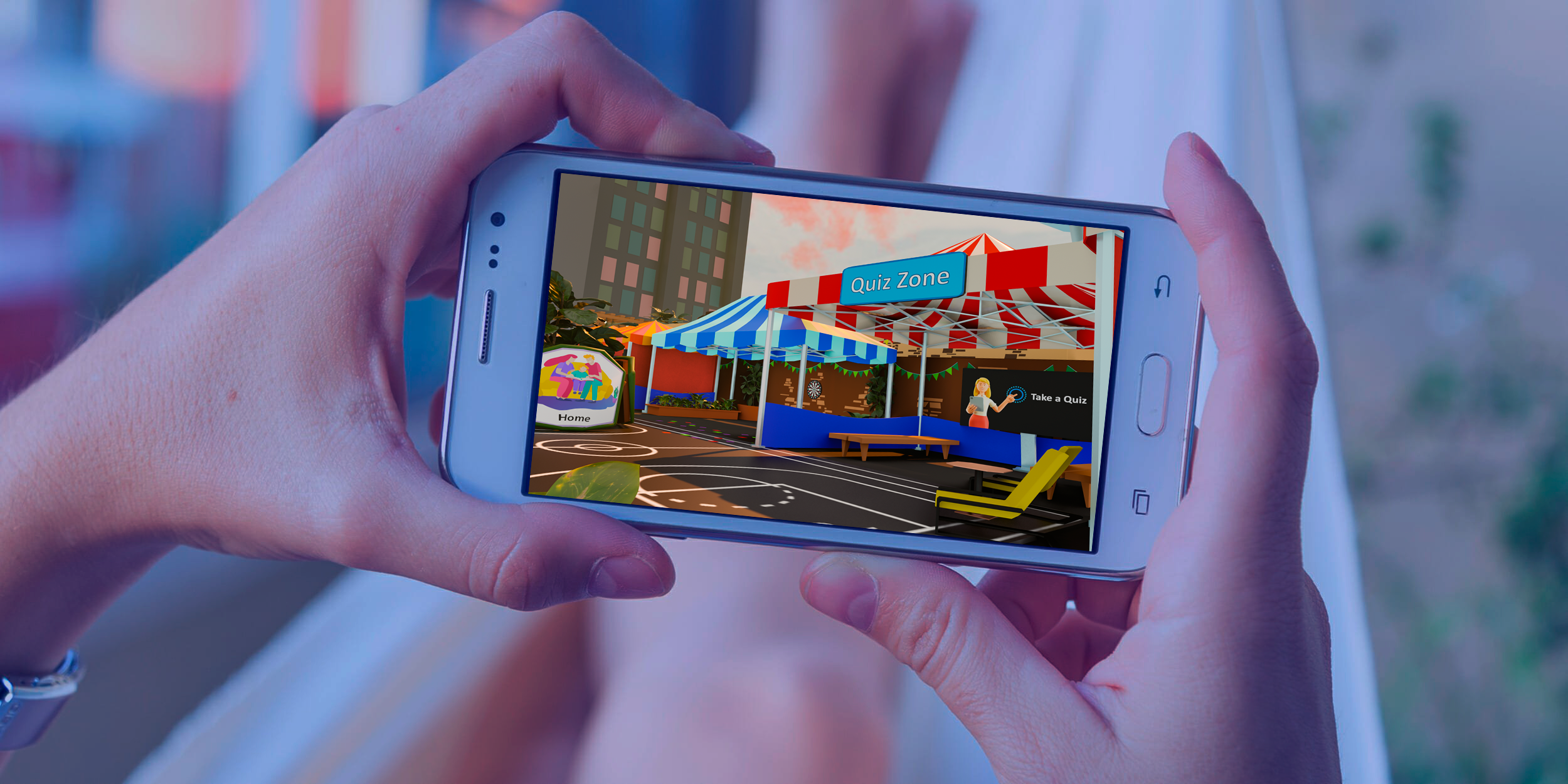— TEACHING SALES
TO BANCASSURANCE AGENTS
Our prototype shows how we approached a client’s need to improve e-learning engagement and content retention for a course designed to sales forces in the bancassurance industry.
Client

Focus
Engagement Growth
Transforming a traditional 2D e-learning course in a 3D experience.
Adapted the client’s content with a strong focus on digitization to an enabling 3D learning experience accessible to any employee at any time across the globe and different devices, with or without virtual reality technology.
*Estimated percentage for the first year of operation.
%
engagement growth *
approval rate *
improved sales *
Solution
— The Challenge
Challenge & Solution
E-learning designed for most Learning Management Systems is seeing user engagement fall to an all-time low. The overall reason? A design and development aligned with early 2000s technological advancements.
Low engagement is not the only problem. There’s also a steep learning curve for which the format does not ensure users retain information with greater ease.
Our solution? Fast-forward to the 2020s and design something for the present and future workforce: digital-natives in a hybrid world.
Go to Bancassurance Distribution Series
Conversational Series – Module 1

The current state of most Learning Management Systems is quite outdated. Aligned with the technological advancements of the early days of the Internet, it lacks user interface and experience, flexibility and personalization, insufficient reporting, poor integration – among other things. It’s a system basically designed to move content from a textbook to a digital screen using graphic and audiovisual elements. From a design perspective, focus is on the mere digitization of content rather than enabling learning itself.
Technological developments of the mid-digital age (2010s) allowed for Gamification to enrich learning experiences, which it did. However, much like its gaming source, playing 2D video games is not the same as 3D. There’s only so much you can do in a linear ‘touch and swipe’ learning mode.
Using our 3D approach, we adapted a traditional 2D e-learning course to a fully immersive virtual environment with gamification and 3D learning elements to make users feel hooked with the learning experience and provide them with opportunities to act autonomously, display competence, and learn in relationship to others.
Our first task was to teach through interaction and application – the ideal way to learn. We proceeded to design a fully immersive environment (available with or without VR equipment), eliminating distractions, therefore increasing the user’s capability to learn. Finally, we designed a virtual space to improve the user’s spatial understanding and memorization, generating real memories of the experience. We transformed the content to happen all around the user, building a first-person learning perspective and leading to better overall comprehension of complex subjects and challenging mindset-changing sales techniques.
The mechanic of the environment involves tracking users’ learning level and ability, raising the difficulty level at the appropriate moment, which keeps users from becoming unnecessarily frustrated with tasks they would deem too difficult or too easy at any given time. The outcome is a continued engagement, where trainees are focused on the learning content and deeply absorbed in practicing it. Approval rate and sales both increased in test scenarios as a result of the internalization of a new sales mindset – the ultimate goal of the course.

